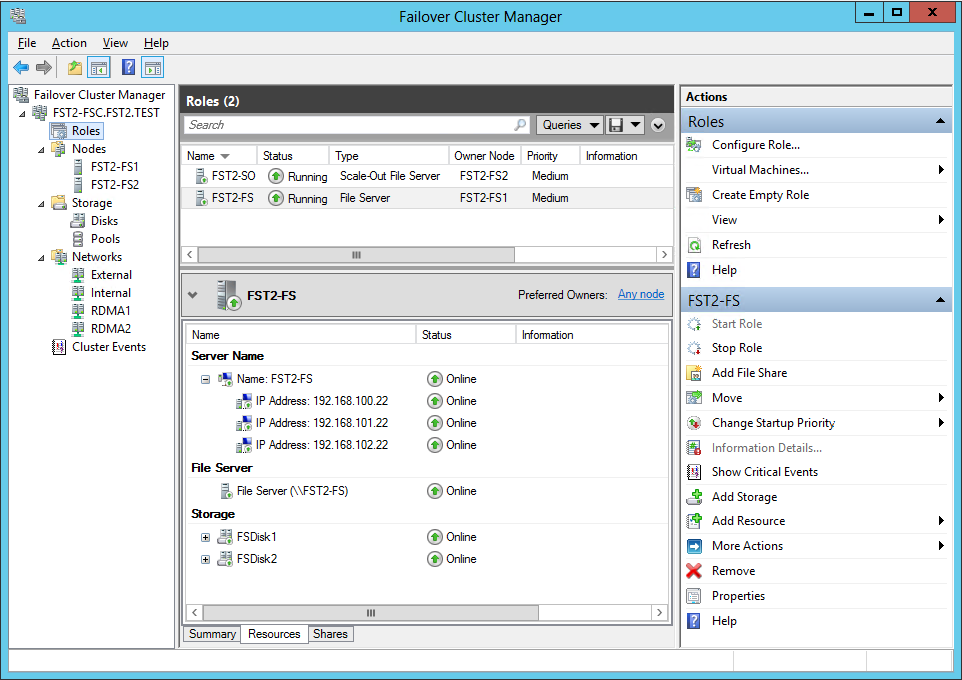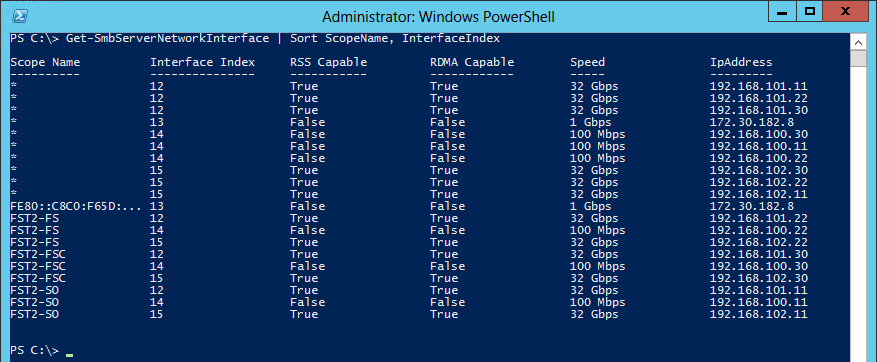Windows Server 2012 File Server Tip: Use multiple subnets when deploying SMB Multichannel in a cluster
SMB Multichannel will let you use multiple network interfaces at once for added throughput and network fault tolerance. When using it with non-clustered file servers, you have the most flexible options, including using multiple NICs on the same subnet. In fact, you can have all the multiple NICs on the same server configured automatically via DHCP on the same subnet.
However, when using a clustered file server, you must configure a separate subnet for every NIC for SMB Multichannel to use the multiple paths simultaneously. This is because Failover Clustering will only use one IP address per subnet, even if you have multiple NICs on that subnet. This is true for both classic file server clusters and the new Scale-Out file server clusters.
For classic file server cluster, you must configure a cluster IP address for every network interface in every file server cluster. This is not changed from previous releases, but is more important now due to the new capabilities in SMB Multichannel. Here’s what the configuration should look like:

For a scale-out file server, you use the node IP address instead of specific IP addresses per file server cluster. However, the same rule applies. You must have different subnets for cluster to offer multiple IP addresses for a single cluster node. You can easily verify that by using the Get-SmbServerNetworkInterface cmdlet. See below:

On the output above, you see that the “*” scope shows all IP addresses on all interfaces. That’s the scope for any non-clustered file shares in the machine. If the server is not on a Failover Cluster, that’s all you should see. Next you see a number of scopes, which each correspond to a Cluster Name and the IP addresses associated with them. The FST2-FS name, the classic file server cluster shown in the first picture, is shown with its three distinct IP addresses. The FST2-SO name is associated with a Scale-Out File Server cluster, which also uses three IP addresses (the node addresses).